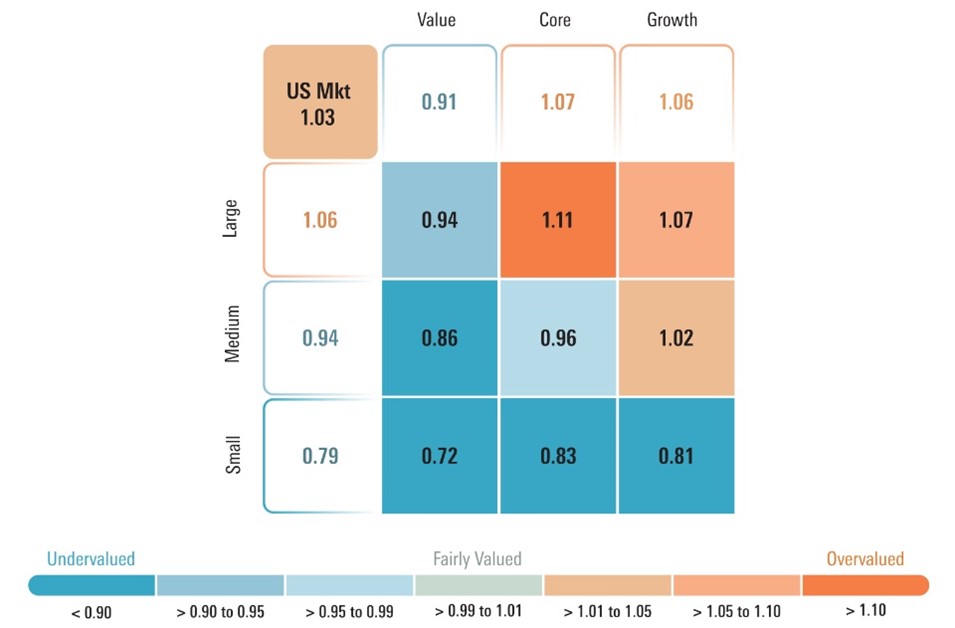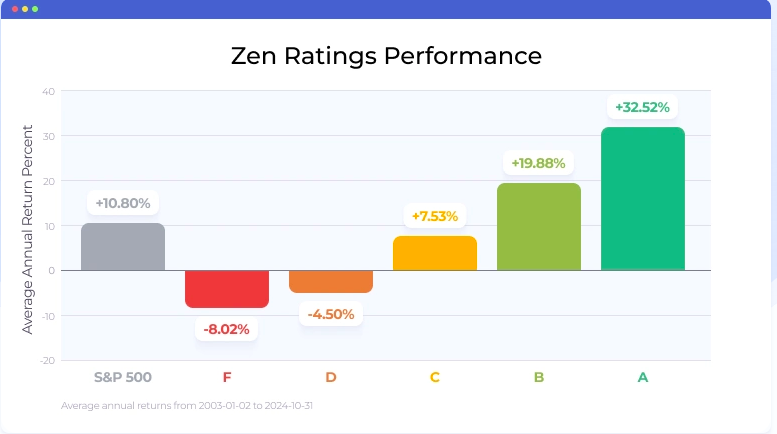20 Best Suggestions For Picking AI Stock Investing Platforms
Top 10 Tips To Evaluate The Strategy Customization Of AI stock Trading PlatformsAI stock-Predicting/Analyzing platforms offer numerous options for customization, which allow users to modify their platform to meet their specific trading objectives as well as their risk tolerance and market condition. Platforms that offer powerful customization options can boost your trading efficiency. Here are the 10 best suggestions for evaluating the customization options available on these platforms.
1. Evaluate Pre-Built Strategy Templates
A variety of templates: Find out if the platform provides various built-in trading strategies (e.g. day trading or swing investing, long-term investment).
Utilizability: Find out the ease with which these templates could be altered to meet your specific needs.
Performance history: Check whether the platform has historical performance information for the pre-built strategies.
2. Assessment Customized Strategy
Drag-and-drop: Look for platforms that offer drag-and-drop interfaces for creating custom strategies.
Coding Options: If are a professional user, be sure that the platform can support the creation of custom codes.
Flexibility: Ensure that the platform permits you to establish entry and exit rules and risk management guidelines, and other key components of your plan.
3. Check for Backtesting Capabilities
Historical data: Check if the platform has enough historical data to backtest your strategies.
Modifiable parameter: Make sure you can adjust parameters while backtesting (e.g. indicators or timeframes).
Performance metrics: Check whether the platform provides specific performance metrics that can be used to backtest strategies (e.g. win rate Sharpe ratio drawdown, etc.).
4. Evaluate Real-Time Strategy Testing
Paper trading: Check that the platform offers the option of paper trading as well as simulation mode for testing strategies in real time, without placing your money at risk.
Live testing You can test your strategies on live markets by using tiny amounts of capital to determine their performance.
Real-time Adjustments: Test if you're able to make adjustments in real-time, based upon the market's conditions.
5. Assess Integration with Technical Indicators
Indicator Library: Verify if the platform has a library of technical indicator (e.g. moving averages, RSI or MACD).
Custom indicators. Ensure that you are able to create or use custom indicators in your strategy.
Combinations of indicators: Determine if the platform allows combining multiple indicators to create more complicated strategies.
6. Check for Risk Management Tools
Stop-loss/take-profit: Ensure the platform allows you to set stop-loss and take-profit levels within your strategies.
Size of the position. Consider whether you could establish rules for the size of positions (e.g. percentage, set amount) and control the risk.
Risk-reward rate: Verify whether the platform allows for setting specific risk-reward rates for specific strategies or trades.
7. Evaluate Multi-Asset Strategy Support
Asset classes: Verify that the platform has strategies for a variety of asset classes.
Cross-asset Strategies: Find out whether it is possible to develop strategies that combine multiple asset classes.
Market coverage: Check whether the platform has the services you require (e.g. US, international or copyright).
8. Assess the automation and Execution
Automated trading: Ensure that the platform allows automated execution of strategies based on predetermined rules.
Order types - Check that the platform supports a range of order types to execute strategies (e.g. stop, limit or market).
Latency: Check if the platform can execute trades with minimal latency particularly for strategies with high frequency.
9. Check for Strategy Optimizing Tools
Optimization of parameters: Make sure the platform offers tools to optimize the parameters of your strategy (e.g. grid search and genetic algorithms).
Integration of machine learning: Check whether the platform is integrated with machine learning to refine and improve strategies.
Scenario analysis: Verify whether the platform permits testing strategies in different market conditions (e.g., bull, bear and volatile).
Review User Support for Community Reviews and Feedback
User reviews: Examine the feedback of users to determine the platform's capacity to adapt strategies.
Forums for communities: Find out if there is an active user community who discuss and share strategies.
Support sources. Make sure there are webinars or tutorials that can assist you in developing and optimizing your strategies.
Bonus Tips:
Trial period: Use the demo or trial version for free to experience the platform's options for customization.
Scalability: Ensure that the platform is able to handle more complex strategies as your trading expands.
Support for customers: Find out if the platform can provide support on strategy-related issues and questions.
By following these tips to evaluate the ability to tailor strategies for AI platforms for analyzing and predicting stocks, ensuring you choose the right platform that is compatible with your objectives in trading and permits you to apply and refine your strategies effectively. Platforms that have strong capabilities for customization can help you adapt to the changing market conditions and enhance the performance of your trading. Take a look at the top rated weblink for ai investing for site info including best ai trading software, ai trading tools, best ai trading software, ai trade, ai for investment, options ai, best ai for trading, incite, market ai, ai for trading and more.

Top 10 Tips For Evaluating The Latency And Speed Of Ai Trading Platforms
When evaluating AI trading platforms that can predict or analyze stock prices speed and latency are key factors, particularly for high-frequency traders and algorithmic traders. Millisecond delays can have an impact on the profitability of a trade. Here are 10 tips to assess the speed and latency of these platforms.
1. Real-time data feeds that are to be analyzed
Time to deliver data: The platform must provide real-time, accurate data within a short period of time (e.g. with sub-millisecond delay).
Find out the distance of the source to most important exchanges.
Data compression - Verify that the platform uses effective data compression techniques to improve speed of data delivery.
2. Test Trade Speed of Execution
Processing orders: The platform's capability to process and execute trades swiftly once an order has been submitted.
Direct market access: Check that the platform allows direct orders to be delivered to the exchange.
Execution reports: Find out if the platform provides comprehensive execution reports, such as timestamps for the submission of orders, confirmation of orders, and fill.
3. Review the response of the platform
User interface (UI) speed: See how quickly the platform's UI responds to your inputs (e.g., clicking buttons, loading charts).
Chart updates: Check to see if the charts and visuals are updated in real time with no lag.
Mobile apps' performance If you are using a mobile application, make sure that it's as fast as the desktop version.
4. Look for infrastructure that is not low-latency.
Server locations: Make sure the platform is using low-latency servers located near major financial hubs or exchanges.
Co-location service: Find out whether your platform has this feature. This allows you to host trading algorithm on servers close to the exchange.
High-speed networks: Determine that the platform utilizes fiber-optic networks that are high-speed or low-latency technologies.
5. Evaluation of Backtesting and Simulation speed
Historical processing of data: Find out the speed at which your platform analyzes and processes historical data.
Simulation latency: Ensure the platform is able to simulate trades in real-time without any noticeable delay.
Parallel processing: Check whether your system uses distributed computing or parallel processing to speed up calculations.
6. Calculate the API Latency
API responses: Find out how quickly APIs can respond to queries (e.g., fetching information from the platform, putting in orders).
Rate limits: Check whether API has acceptable rates limits to avoid delays during high-frequency trades.
WebSocket support - Check to see if your system is running the WebSocket protocol for low-latency real-time data streaming.
7. Test Platform Stability During Loading
Simulate scenarios of high-volume trading to test whether the platform is stable and responsive.
Market volatility: Try out the platform during times of high volatility to test whether it can handle rapid pricing shifts.
Check to see whether there are any tools available for testing strategies for extreme situations.
8. Investigate connectivity and network
Internet speed requirement: To achieve optimal performance, make sure that your internet speed is in line with the speed of your preferred platform.
Verify connections that are not redundant.
VPN latency. Check to see if you're using the VPN to determine if it causes latency.
9. Make sure to check for speed enhancement features
Pre-trade Analytics: Make sure the platform offers pre-trade analysis to improve the speed of execution, order routing and many other aspects.
Smart Order Routing (SOR). Make sure that the platform is using SOR to identify the most speedy and cost efficient execution venues.
Monitoring latency: Verify if the platform provides tools to analyze and monitor the latency in real time.
Review the feedback of users and benchmarks
Reviews from users: Perform user studies to determine the platform's performance in terms of latency and speed.
Benchmarks from third-party sources: Search for reviews and benchmarks from independent sources which compare the performance of the platform to those of its competitors.
Case studies: Check whether the platform has case studies or testimonials that showcase its capabilities for low-latency.
Bonus Tips:
Try the trial for free or demo period to test your platform's speed and latency in real-world conditions.
Customer Support: Make sure whether the platform provides support in latency-related problems or for optimization.
Hardware specifications. Make sure the system is compatible with specific hardware like high-performance computers.
These tips will help you assess the speed of AI trading platforms which predict or analyze the prices of stocks. It will allow you to pick a trading platform that best meets your trading requirements and minimizes any delays. Low latency is especially crucial for algorithmic traders and high-frequency traders, as even minor delays can impact the profits. Follow the best ai share trading for more examples including AI stock predictions, AI stock predictions, free AI stock picker, ai for trading stocks, trading ai tool, best AI stocks, AI stock predictions, ai investment tools, stocks ai, trading ai tool and more.
